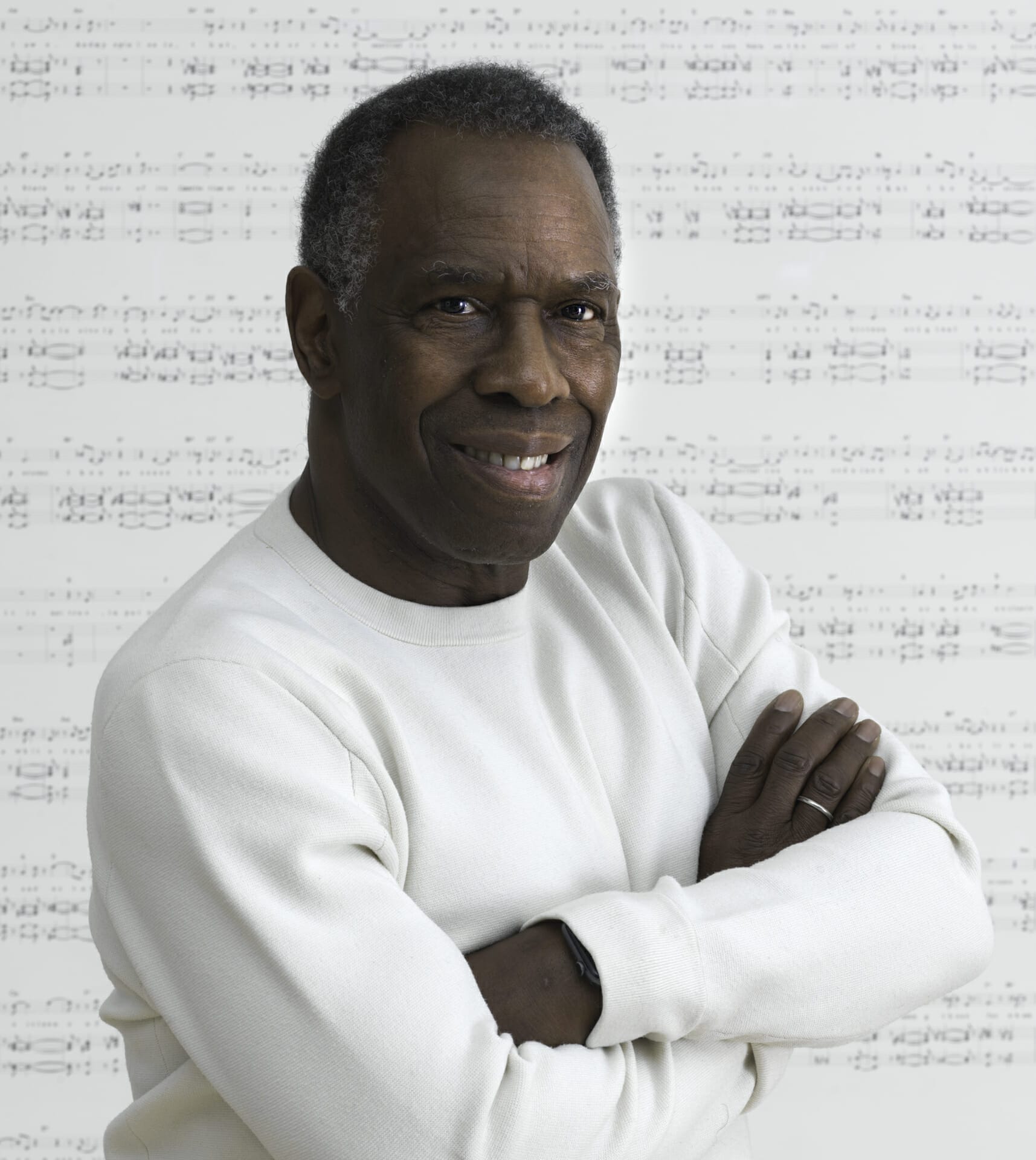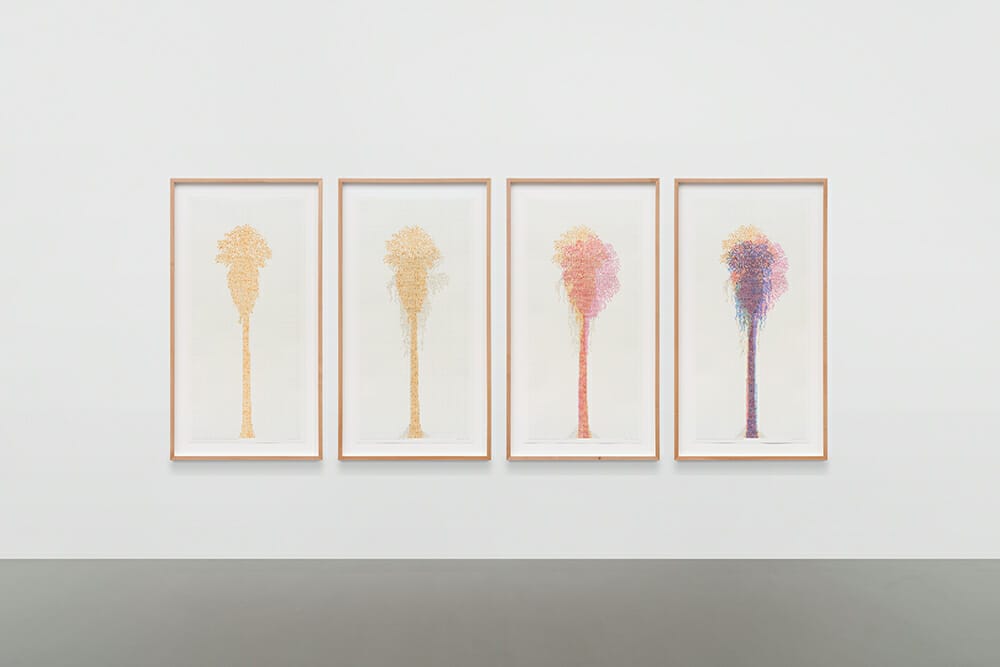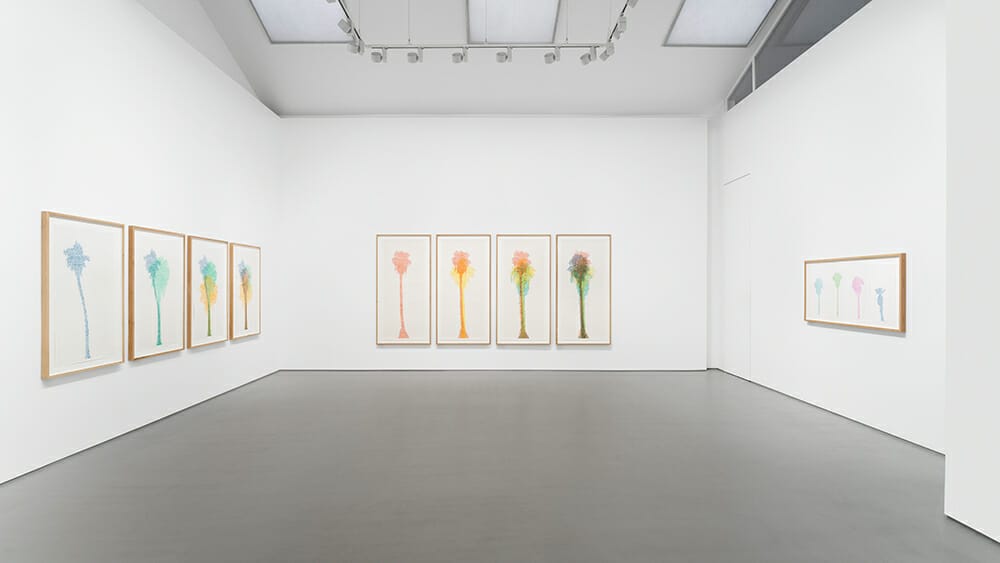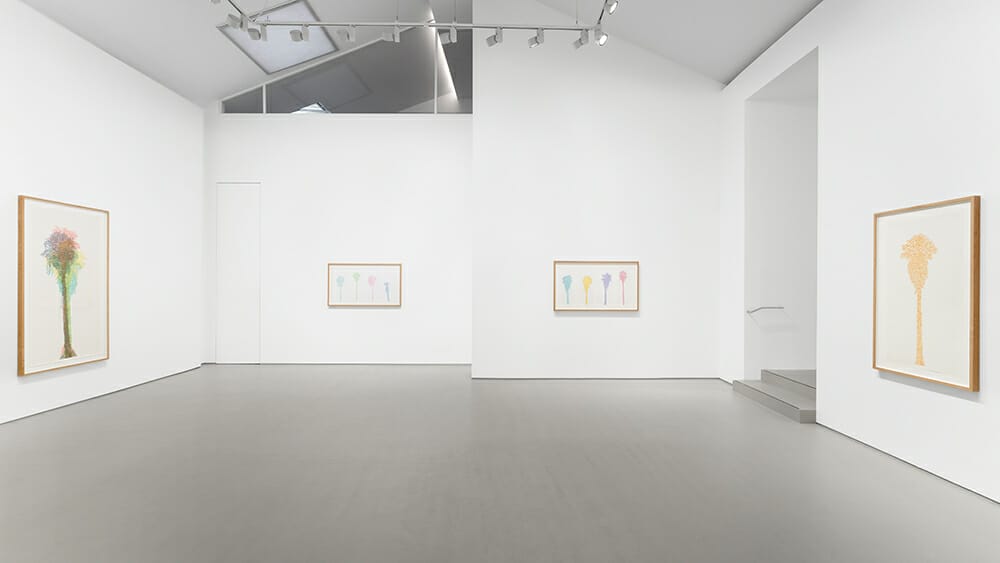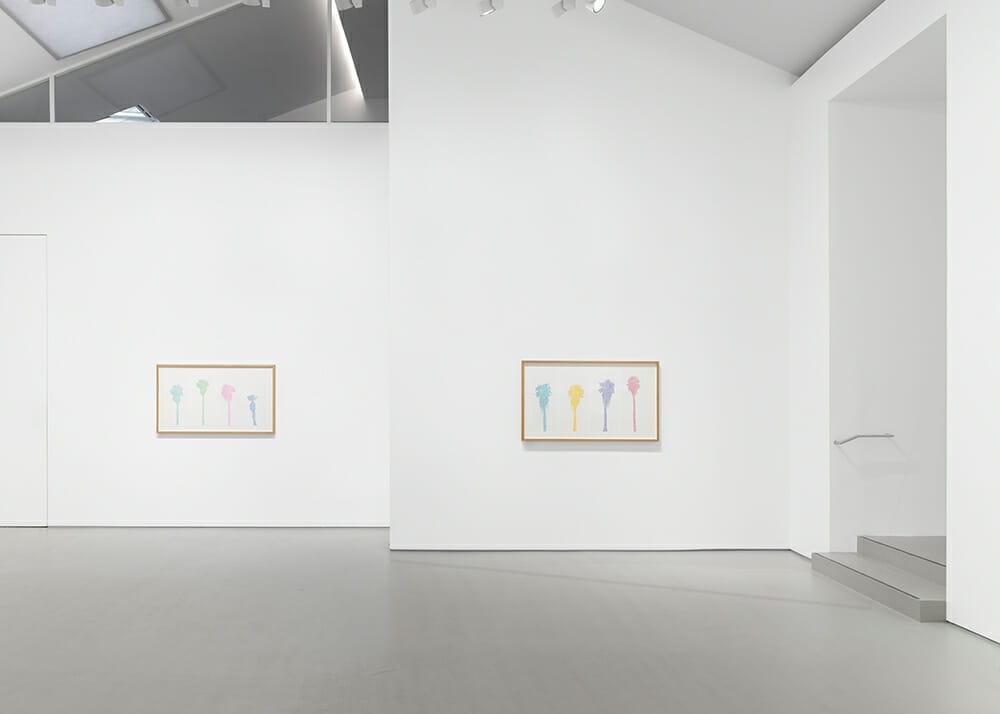“... modern art made us believe that subjective judgments transcended intellectual thought therefore could not be the subject of criticism. I thought this was wrong. To me, it is better to think of intuitive judgments as arbitrary expressions and the job, then, was to make them meaningful through critical thought…”
So says American conceptual artist Charles Gaines in his discussion on the subjectivity of systems art. His exhibition Gridwork: Palm Canyon Watercolors is currently taking place in Galerie Max Hetzler in Paris through 30 July, 2022. According to the Galerie Max Hetzler website, this exhibition belongs to Gaines’s ongoing Gridwork series. In his watercolor artworks, Gaines uses grids to create images of palm trees, a subject that he has been working with since 1980. In every series, we can see a variation of a palm tree through Gaines’s layering technique: an almost dynamic evolution of both color and form.
Here, artist Charles Gaines (CG) speaks with Picture This Post (PTP) about his art practice and his exhibition.
(PTP) What is the role of numbers in your art?
(CG) I refer to my practice as systems art. Numbers and the grid are both visual forms but also tools in order to apply the rule-based system that I use to realize works of art. The first systems work I created, The Regression Series (1973-74) used a system of numerical calculation whose purpose was to create shapes that were visual aggregates of the numbers themselves. But since then, I use numbers in my grid-based work to locate points on a grid. This allowed me to plot the shape of objects like trees on a grid and to also layer them on top of each other in a series. The layers were of objects of the same type. The numbers allowed me to duplicate a tree on a grid from a photo, for example in series where I would have to reduplicate the same tree every time I layered a new tree on top.
Why do you use palm trees in this body of work?
The reason I use trees is because their shapes can be plotted on a grid and remain identifiable as an object. It is also conceptually important in order to create a system to track places of differences as well as places of congruence. The palm tree is a selection that is not any more unique than the selection of other types of tree (although the palm is technically not a tree but a type of grass). There is no symbolic or critical reason for its selection. Just as any object I choose to grid-out, I make the selection based upon their adaptability to the system that I use to create layers.
Why watercolors?
I have used watercolor ever since I first started making art. My first interest is to use a pigment that is or can be made translucent because the forms, like trees that I produce are sequentially layered; it is very important to be able to see the different objects that are layered in the series. For example, if I am layering ten trees in a sequence over a series, I assign a different color to each tree, just as one might assign colors to different files in a filing system. When the series is produced, the trees that make it up can be identified by the color they are assigned. Also, as the trees overlap the transparency allows the colors to mix and this begins to produce new tree-like forms that are separate from the actual tree shapes that are plotted from photographs. I metaphorically read this as the system painting the tree rather than my imagination.
What inspired you to experiment with systems art?
I got involved in systems and rule-based strategies to make art because while I was a graduate student I had problems with the received idea of making art based on intuitive expression. For me, what I intuitively imagined did not feel like it came from my subjectivity. That subjectivity was a construct, not a real thing that explained non rational decisions. My problem was not in the idea of subjectivity or intuition, or even expression as constructs; my problem was that they were used to define the purpose of art, which was “self expression.” I thought the expression was as much culturally influenced as intuitive, that there are social and cultural influences in what one feels and thinks. And in this case, one’s expressions can be the subject of critique. However, modern art made us believe that subjective judgments transcended intellectual thought therefore could not be the subject of criticism. I thought this was wrong. To me, it is better to think of intuitive judgments as arbitrary expressions and the job, then, was to make them meaningful through critical thought. The feeling that is produced is inevitable but is a product of a learned response, not a manifestation of a pure subjectivity uninformed by our experiences. Thus, I began to develop a rule-based idea of making as an alternative to making work from pure intuition. The system itself is a product of my imagination, for sure, but the choice of it is a critical one directed toward a critique of expressivity as the basis of art making.
Why do you think that personal expression is not key to art?
I am not against work that is a product of personal expression. I think all work starts from one’s imagination. Different people make work for different reasons. I am not trying to argue for an idea of art that is universal. There is no universal idea of art, ideas about art are diverse and culturally driven. The choice to use a system was a personal decision on my part to try to make an art that was meaningful to me. However, I do have a problem with the ideology that a work of art is such because it is a subjective expression, that the act of expression from one’s unconscious is what makes a work of art art.
What is the most challenging in your art practice, and what does your practice challenge?
What is challenging to me has nothing to do with the idea of systems art. I am challenged by the same thing that challenges artists in general, which is, coming up with interesting ideas.
I don’t see my practice as marginalized in relation to a normal idea of art. My work is addressing and trying to challenge the modernist idea that art exists on the feeling/intuition pole of a binary where thinking/logic marks the opposing side. Therefore, I use a system to engage forms and images that engage us aesthetically and critically. This challenges the binary by showing that rational systems can produce poetry, and that the perception of the poetic requires thought, not just feelings.
For more information, visit the Galerie Max Hetzler website.

About the Author: Mingyuan Dong
Ming has lived in China, the United States, and France. She speaks the languages of all three of these countries, as well as German. With these tongues, Ming enjoys traveling, visiting art museums around the world, and discussing all kinds of art with fellow art enthusiasts.
Ming grew up studying drawing in studios. Today, Ming spends most of her time making art, or studying the arts. She especially enjoys making works about linguistics, the natural environment, and living situations.


